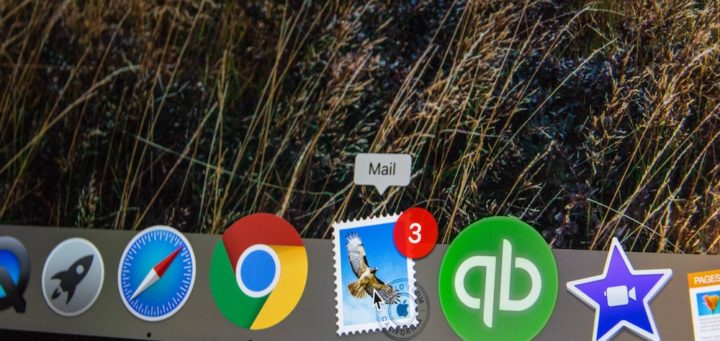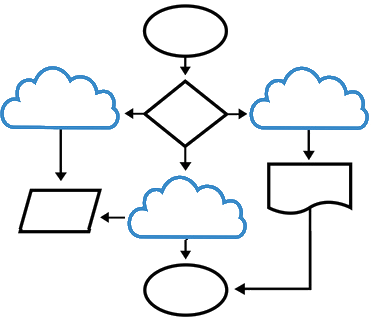The Basics of Email Marketing: Newsletters
Today’s post is the first in this month’s series on the basics of email marketing. If you aren’t familiar with email marketing, the definition of it is simple: it’s the process of sending emails to your customer list (or potential customer list) with the goal of continuing your business with them, or gaining new business. New anti-spam legislation requires these emails to be an “opt-in” process, whereby your customers have to sign-up or give their permission in order for you to add them to your mailing list.
Email marketing can come in a variety of forms, but the most effective methods are promotional emails or newsletters. Promotional emails are periodic contact with your mailing list, “rewarding” them with links to sale items or discount codes in return for them opening your email. This type of email marketing is focused on short-term customer acquisition, where you hope to draw as many visitors to your site as possible, with high conversion rates.
Newsletter Marketing
Newsletters, sent daily, weekly or monthly, can contain information about your products and services, updates about your business, industry news, invites to special events, or relevant and educational materials. Regular, periodic contact will help to nurture your relationship with your customers, creating long-term contacts who will look forward to receiving your emails in their inbox. We want to specifically cover the basics of newsletter marketing in this post, because it’s an important tried-and-true marketing tactic that will help you build loyalty, engage your customers, and drive sales on your site.
Email newsletters give customers the opportunity to learn more about the company and its products, and allow businesses to talk about themselves and their products without an aggressive sales pitch. Newsletters are a very affordable and easy way to keep in touch with your clients, and can contain a range of information that may not necessarily relate to buying your products. Keep reading to learn more about the basics of newsletter marketing!
Build a Contact List
There are many ways to get new email subscribers for your newsletter campaign, especially if you’re a bit creative.
- Website Sign-Ups: using your website as a sign-up point is the easiest starting point to collect email registrants. You can embed a form as a banner or pop-up on specific landing pages of your site.
- Incentive Sign-Ups: take advantage of offering “incentives” in return for email sign-ups. For example, your call to action can be to offer a white paper download, contest prize, or webinar access in return for your customer’s email address. Make sure your offer is highly relevant to your products or services, so that you are only adding quality subscribers to your contact list.
- Offline Sign-Ups: you can also collect quality subscribers via offline sign-ups as well, via call centres, or in-store (by having a guestbook or email sign-up sheets near the front desk, or till). If you host or attend seminars, or tradeshows and conventions, these are prime subscriber hotspots as well.
It is very important to remember quality vs quantity in terms of your newsletter contact list. You want to make sure the people receiving your emails are actually invested in the content and offerings, and won’t immediately delete or unsubscribe from your newsletters.
Resist the Urge to Sell
This will be a tough point for many. Promotional emails are sales-focused, whereas newsletters build your brand, customer loyalty, and customer engagement. If your content is only about “buy me, buy me, buy me”, then your contacts will feel spammed and are more likely to hit delete, or even worse, the dreaded “unsubscribe”.
Rather than sending emails only advertising your products or services, use them as a tool to show your expertise in your industry, or to provide helpful information or tips. For example, a clothing company can showcase the basics of pairing booties with various outfits. Or a cleaning company can provide their shopping list of favourite cleaning products or tips for spring cleaning.
Your newsletters don’t have to be essays or novels of information; they should just be periodic reminders of how valuable you can be to your clients with your offerings.
Use Engaging Subject Lines
Your email subject lines have to be attention-grabbing, otherwise they will be passed over, or moved to the junk folder without another glance. Don’t use generic headings like “John’s Cleaning Services: Monthly Newsletter”; instead, use a title that will interest your customers into reading further, such as “How to Get a Cleaner Kitchen in 5 Easy Steps”.
Listen To Your Readers
Instead of trying to guess what your audience wants to read, why not find out straight from the source? When you get asked a question about a specific product, service or your industry in general, use the answer as the next topic for your newsletter.
You can also ask your customers to help provide content ideas. Get them to submit questions online, or simply ask them if there is a topic that they’d like you to discuss. You can even provide a “gift” in return for a topic that gets published, like a coupon code for future purchases.
Make Your Emails Mobile-Friendly
We tend to do most of our personal email reading in bed at night or before we get up in the morning…does that sound familiar to you as well? With almost 50% of email newsletters being opened on mobile, it’s essential for you to make sure your newsletters are mobile-friendly. Many email newsletter tools or default templates will come with this functionality enabled, so you just need to make sure you find the right tool. We’ll be posting more on email marketing tools later this month, so check back again for more information.
Deliverability
There’s not much point in spending all this time writing awesome newsletters if they’re going straight to your customer’s junk boxes. Using a tool like Mailchimp can help you authenticate your campaigns so that you can avoid deliverability issues.
Authentication is a way to prove an email is not forged.
Authentication has been around for years, but large ISPs and corporate email servers (“receivers”) are now using it to control inbound spam. That means large, legitimate email marketers need to make sure their email campaigns are authenticated, in order to prevent deliverability problems to those ISPs.
A/B Split Test
Every company is different and has different success stories, depending on the requirements of the business and of their clients. You can research all you want, but never assume what will work for one company will give you the same results. A/B split testing will give you the insight you need to make decisions on the direction and content of your newsletters. Try sending out the same newsletter with two different subject lines to two different groups of clients, to see which one will give you the highest open rate.
Or you could test how often to be sending emails to your customers, or even what time of day gives you the most responsiveness. A/B split testing can be done through most mailing services, and will provide invaluable insight into the perception of your newsletter campaigns.
Measure Campaign Success
How often are your customers opening and reading your newsletter? How many customers have unsubscribed? Which articles have the highest “share” rate? Similar to A/B split testing, measuring your campaign success via your mailing service providers tools is one of the best ways to capture your campaign ROI. Set up some metrics that you want to measure against and track the performance for your next newsletter; the information you learn may help you decide on future content, incentive sign-ups or even promotional deals that your customers are looking for.
Throughout the rest of this month we’ll be adding a few more posts to further develop the topic of email marketing, like segmenting lists, and the best mail service tools to get your campaign off the ground. Stay tuned to find out more in Part II of our basics of email marketings series!




